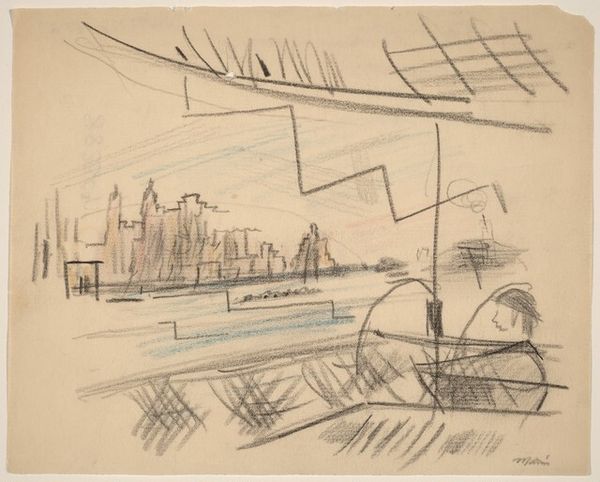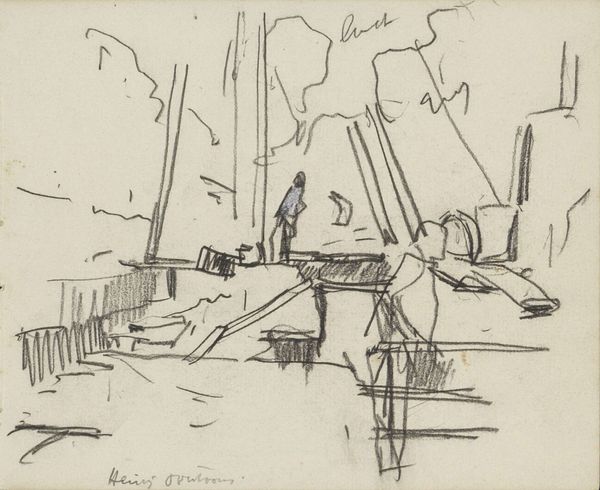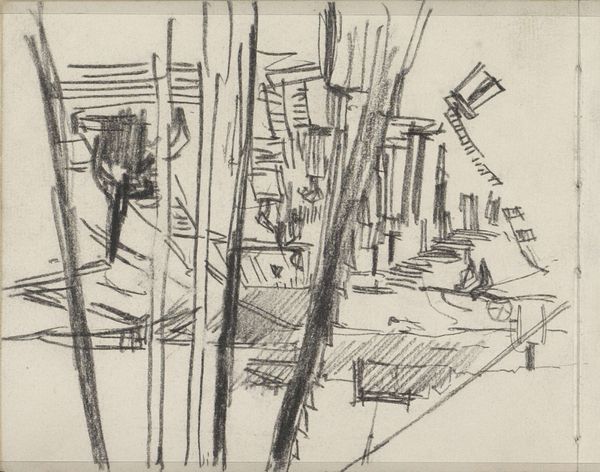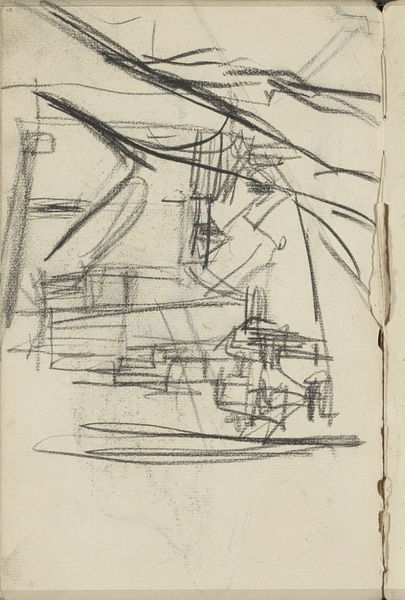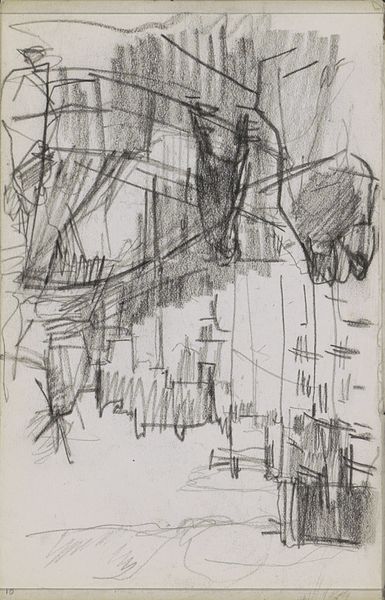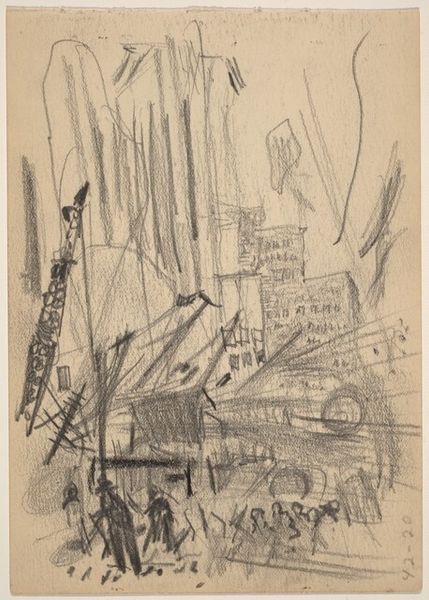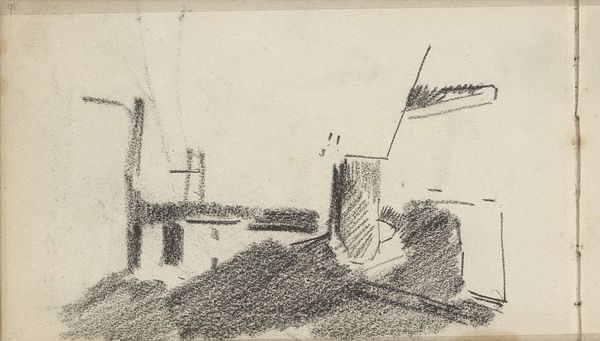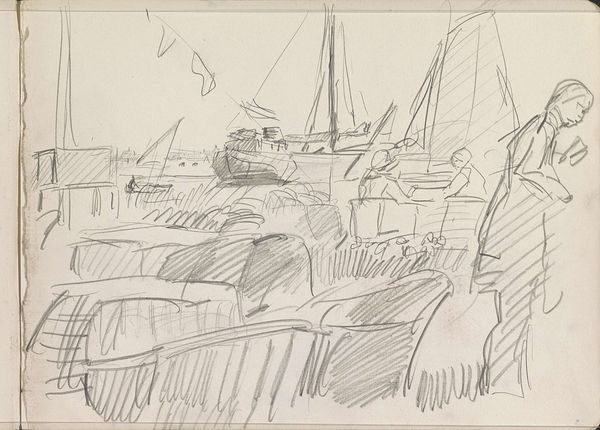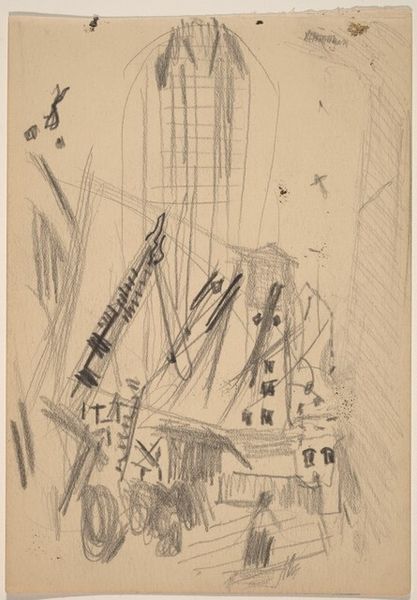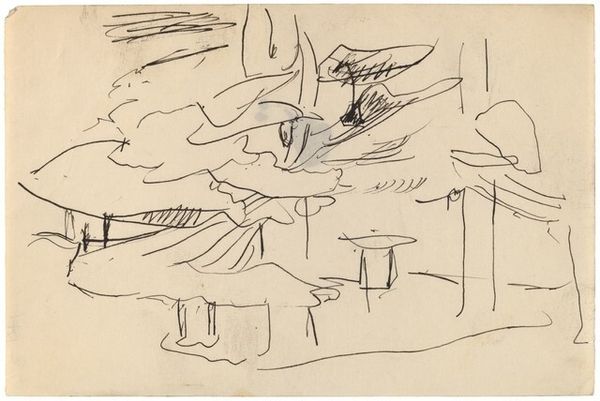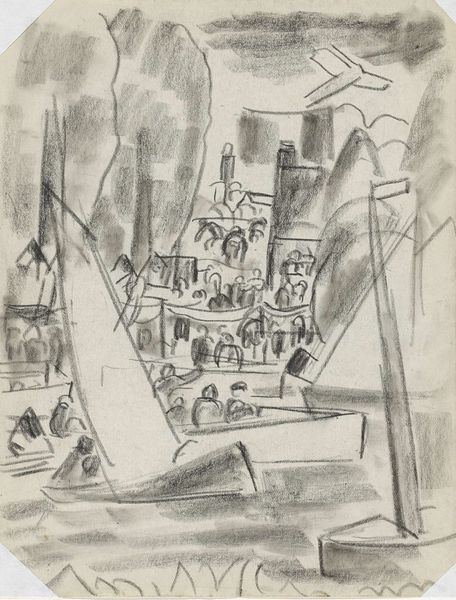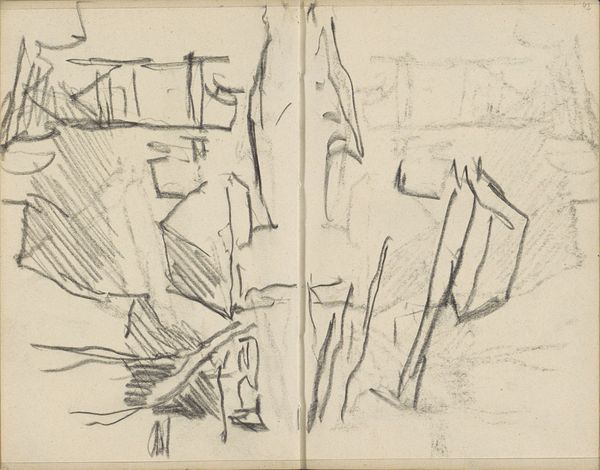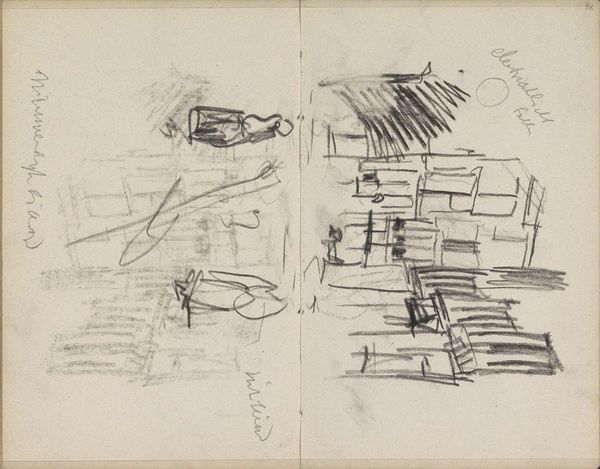
drawing, paper, chalk, charcoal
#
17_20th-century
#
drawing
#
ink drawing
#
landscape
#
paper
#
expressionism
#
chalk
#
sketchbook drawing
#
cityscape
#
charcoal
#
modernism
Copyright: Public Domain
Curator: This is "Dampfer und Segelschiff im Hafen," or "Steamer and Sailing Ship in Port," a charcoal, chalk and ink drawing on paper by Ernst Ludwig Kirchner, circa 1910. Editor: Immediately striking, isn't it? The chaotic lines give it such a restless feeling. You can almost feel the energy of the harbor through the stark contrasts. Curator: Absolutely. Kirchner was very much engaged with capturing the frenetic pace of modern urban life at this time. The rise of industrial harbors and the shifting social landscapes within port cities was significant, especially for artists of Die Brücke, interested as they were in expressing authentic experiences. Editor: Looking closer, the composition is remarkable. The masts create this network of diagonal lines that both divide and connect the two ships, which mirrors the contrast between the old and new technologies meeting in the port. Curator: Yes, that visual juxtaposition is important. It is about acknowledging a pivotal moment, that meeting point of old-world aesthetics, of traditional maritime practices and an increasingly mechanized modernity. Kirchner isn't just sketching ships; he's sketching societal transformation. Editor: I’m interested by the depth he achieves. The bold shading on the steamer's hull is remarkably textured against the fragile sailboats' lines. Almost sculptural, you know? The layering really amplifies that feeling of bustling activity. Curator: He was interested in conveying something of lived experiences and the psychological reality of these burgeoning cityscapes through art. The lack of refined details makes you sense this piece was more of a personal reflection than a formal declaration. Editor: That raw immediacy makes it so compelling. This drawing exemplifies how abstract forms can convey such dynamic, complex feeling. I keep coming back to this balance between the static vessel on the left, so permanent looking, and this flurry of angled lines describing the sailboat and it’s almost dancing. Curator: Understanding its context in a period of rapid societal change enriches one’s perspective and opens conversations around art’s role as not just decorative, but functional, both witness and agent in public dialogues. Editor: It’s really satisfying to understand how such a simple scene becomes so multi-layered when you pause and consider the forms, materiality and artistic voice present in the piece.
Comments
No comments
Be the first to comment and join the conversation on the ultimate creative platform.
